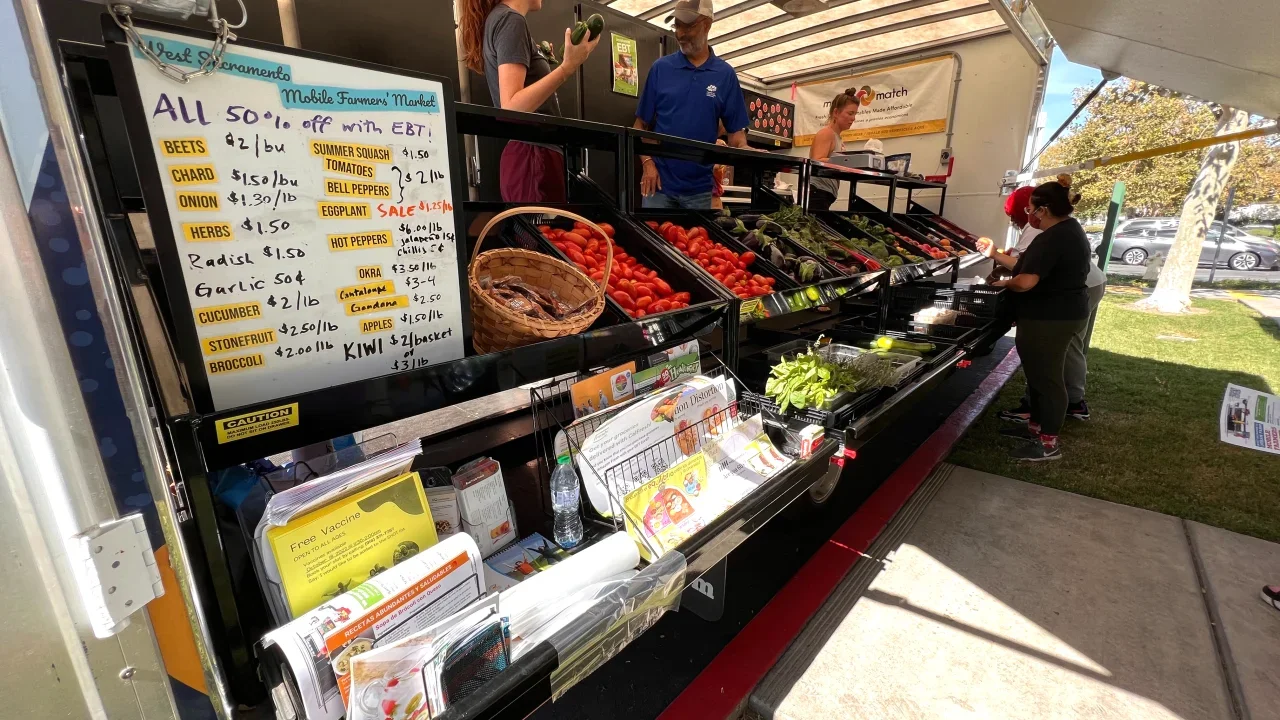The Future of Food Access in California Isn’t a Supermarket
Forget waiting for supermarkets to fix food access—mobile markets are the future.
The traditional grocery model is failing, and it’s costing us more than just money. Food is medicine, and access to it is life-changing.
California’s food system is infamous for many reasons:
Los Angeles County has one of the highest food insecurity rates in the U.S., with 25% of households struggling to access enough food.
California grows over a third of the country’s vegetables and two-thirds of its fruits and nuts, yet millions of residents struggle to put fresh food on their tables.
Governor Newsom just signed new legislation to increase access to locally grown, healthy food for California’s youth.
Food deserts are expanding every year as supermarkets leave low-income neighborhoods.
When a natural disaster strikes, when food prices soar, traditional food systems collapse—leaving entire communities stranded.
Mobile markets are the solution. They move fast, adapt instantly, and bring food where it’s needed most - Bringing the gap that supermarkets are leaving behind.
Why Mobile Markets Are the Scalable Food Solution California Needs
Mobile Markets work when traditional grocery stores can’t. Because Supermarkets take years to build and millions in investment. Mobile markets don’t have these limitations.
Let’s do the math:
Mobile Market (500-1,000 Families/Week)
Launch Cost: $500,000
Annual Operating Cost: $100,000
Cost per Family Served (Annual Only): $1.92 - $3.85
Supermarket (3,000-10,000 Families/Week)
Launch Cost: $10M - $20M
Annual Operating Cost: $2M+
Cost per Family Served (Annual Only): $3.85 - $12.82
Supermarkets are built for scale. Mobile markets are built for impact. A supermarket demands 20-40x the investment of a mobile market, yet in food deserts and rural areas, its reach is limited.
Mobile markets move fast, cost less, and meet people where they are—delivering fresh food at a fraction of the cost. Furthermore, when it comes to long-term sustainability? Lower overhead means they’re built to last.
Big doesn’t always mean better—sometimes, smaller and smarter wins.
Mobile Markets Strengthen Communities and Build Resilience
When a neighborhood loses its grocery store, food access disappears overnight.
Mobile markets provide immediate food access when stores close.
Mobile markets offers more than food, they are community health programs with a holistic approach on food insecurity.
The food system needs to be built for people, not just profit.
California’s grassroots food justice organizations know this. From urban farming transformations in LA to food hubs serving small farmers, community-led solutions are already proving that mobile, localized food access works.
The Future of Food Access Is Mobile—Who’s Ready to Invest?
We don’t need more studies on food insecurity.
We don’t need to wait for grocery chains to decide where they’ll build next.
We can’t afford to let another crisis hit and leave people without food.
Mobile markets are the solution. They work now, scale now ,and feed people now.
California’s food system is broken, and waiting won’t fix it. Therefore, we don’t need another report—we need action.
Mobile markets are ready. Are you?

